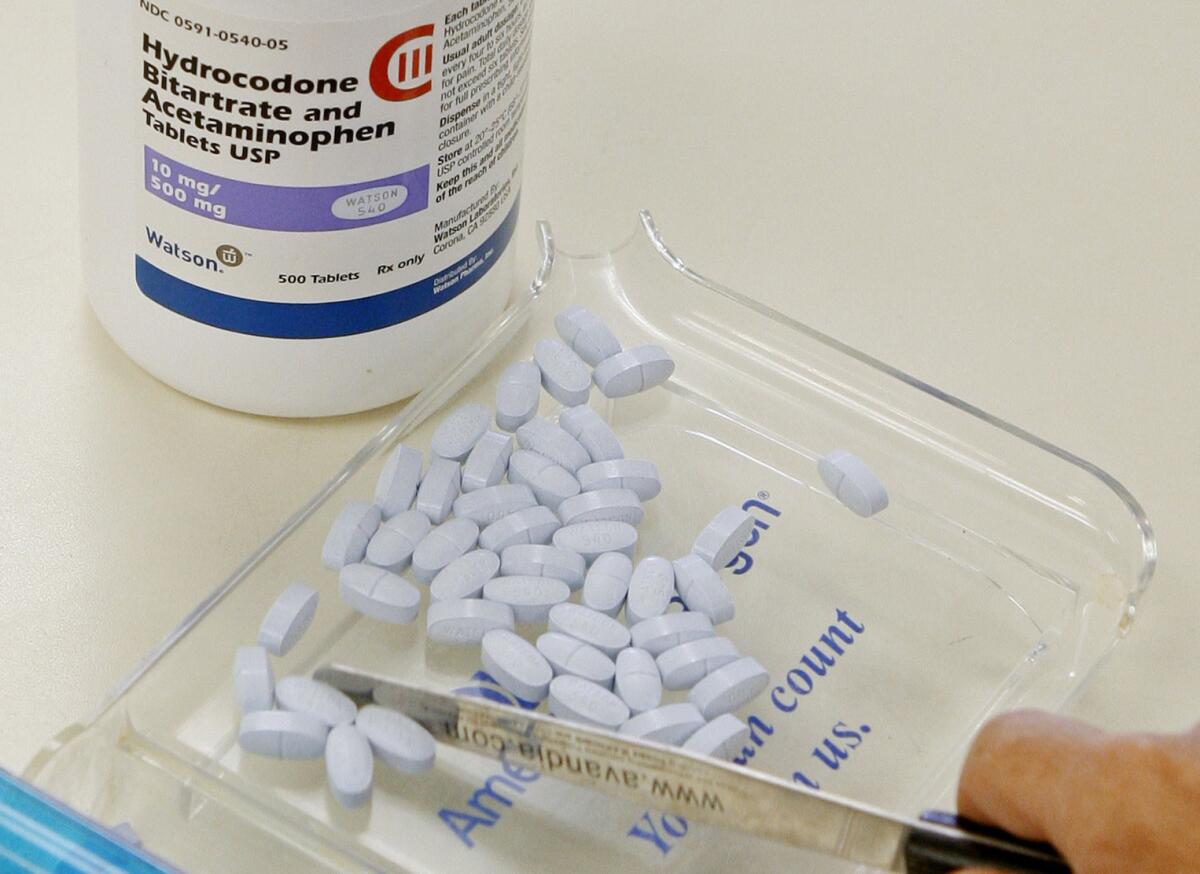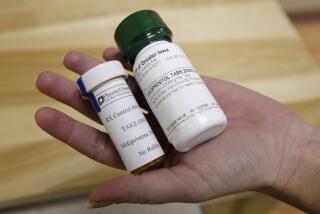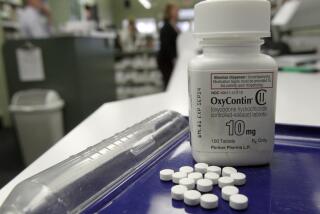How the prescriptions doctors wrote may have helped fuel the U.S. opioid crisis

Americans and Canadians are about seven times more likely to fill a prescription for opioid pain pills in the week after surgery than Swedes, according to a new study that is one of the first to quantify international differences.
More than 75% of patients in the U.S. and Canada filled a prescription for opioids following one of four common surgeries, compared with 11% of Swedes, researchers reported Wednesday in JAMA Network Open. Americans also received the highest doses of opioids.
Does that mean Americans and Canadians have a lower tolerance for pain, or is something else going on?
“There are a lot of tough people in lots of places,” said Dr. Mark Neuman, an anesthesiologist at the University of Pennsylvania Perelman School of Medicine and a coauthor of the study.
He pointed to a host of other potential factors, from cultural differences to variations in marketing, regulation and prescribing habits.
“It’s possible that in the U.S. people think about opioids as pain relief in a drastically different way than in other places,” he said.
The study included about 129,000 patients in the U.S. with job-based insurance, 84,600 in Canada’s Ontario province and 9,800 in Sweden. The U.S. and Canada were chosen because they have the highest per capita consumption of opioids in the world. Sweden was picked as a European counterpoint because researchers could obtain detailed prescription information from databases there.
The authors examined four types of surgeries — minimally invasive procedures to remove the gallbladder or the appendix, as well as arthroscopic surgery to repair a torn meniscus in the knee and breast tumor removal. All 223,834 surgeries occurred between January 2013 and March 2016, a time of growing concern about opioid dependence in the United States but before more recent guidelines suggesting that fewer pills are needed following many common surgeries.
“For the same exact surgery, the same exact tissue trauma, we have seven times more people in the U.S. getting opioids,” Neuman said.
On average, patients in the U.S. filled prescriptions for about 33 pills, each equivalent to 5 milligrams of oxycodone, he said, although the type of drug varied. Swedes who filled prescriptions got an average of 26 pills, while Canadians had 22.
Canadians and Swedes were also far more likely to get codeine or tramadol — painkillers that work differently in the body and are considered weaker types of opioids. Americans were far more likely to get hydrocodone or oxycodone, some of which were heavily marketed to physicians. (States and cities are currently suing manufacturers, alleging they misrepresented the drugs’ risks and didn’t properly monitor suspiciously large sales, contributing to the opioid crisis.)
The study authors noted that, during the research period, low-dose codeine was available over the counter in Canada. Tramadol is still not classified as a controlled substance there, although it has been a controlled substance in Sweden since 2007 and in the U.S. since 2014.
“While prescribers may view these so-called weak opioids as safer alternatives, data suggests that both codeine and tramadol have the potential for misuse and life-threatening adverse effects,” the study says.
The researchers noted some limitations of their report. For one, they could not track how many of the prescribed pills the patients actually took. Nor could they tell how many patients didn’t fill prescriptions they were given. They also lacked data on how well patients felt their pain was controlled following their surgeries.
“It’s possible that in Sweden everyone’s pain treatment is less than in the U.S., although I think that is unlikely,” Neuman said. He added that other studies have shown that surgical patients in the U.S. often don’t take all the pills they’ve been prescribed.
In some cases, patients who are prescribed fewer pills after surgery do not report greater dissatisfaction. Researchers in Michigan, for example, recently reported that after dozens of hospitals adopted new prescribing guidelines that recommended fewer pills, patients did not report an increase in pain.
Academic medical centers and experts have recently issued guidelines calling for fewer pills following many procedures. Those grew out of concern that patients with acute pain — the kind following surgical procedures, for example — were given far too many pills.
Postsurgical opioid use can lead to long-term dependency in a small but significant percentage of patients, studies have shown, but unused pills can also be a danger. Those tablets can make their way to the street or fall into the hands of other family members.
Dr. Chad Brummett, a pain researcher who worked on the Michigan guidelines, said he thinks prescribing amounts in the U.S. and Canada have probably dipped in recent years, given the increased attention to addiction risk.
Still, he cautioned that the amounts probably remain too high in both countries and that the new study illustrates the wide disparity between North America and at least one European country.
“We know that marketing in the U.S. has affected prescribing in all domains, including surgery,” Brummett said. “This study and others show that [surgeons] in the U.S. and Canada can drastically reduce prescribing standards without adversely affecting patient care.”
Appleby writes for Kaiser Health News, a nonprofit news service covering health issues. It is an editorially independent program of the Kaiser Family Foundation that is not affiliated with Kaiser Permanente.






